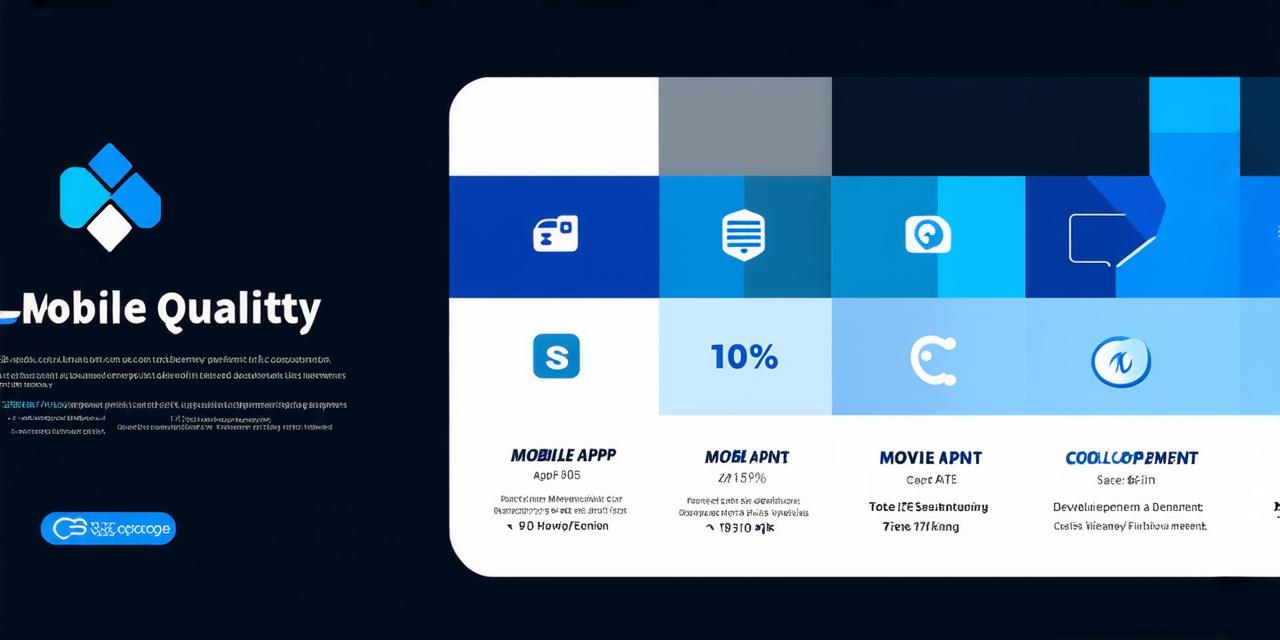1. Platform Selection: Choosing the Right Mobile App Development Platform
One of the first critical decisions you’ll need to make as a mobile app developer is which platform(s) to target. Both iOS and Android are popular platforms, with millions of active users each. However, there are some key differences between the two that can impact the cost of your project.

- Development Time: Developing an app for both iOS and Android can significantly increase the development time, as each platform requires a separate codebase. This means you’ll need to hire more developers or allocate more time to the project to complete both platforms.
- Testing: Testing your app on multiple devices and platforms can be more complex and time-consuming than testing on a single platform. You’ll need to account for differences in hardware, operating systems, and other factors that could impact the performance of your app.
- Maintenance: Maintaining an app for both iOS and Android can be more challenging and expensive, as you’ll need to update and bug-fix both versions simultaneously.
2. App Complexity: Understanding the Impact of Complex Features on Development Costs
The complexity of your app will also play a significant role in determining the expense of creating a mobile application. Apps with more complex features, such as social media integration, augmented reality, and machine learning, require more development time and resources.
- Features: The number and complexity of features required for your app will impact the development time and cost. For example, an app with a simple user interface and basic functionality may be developed faster and at a lower cost than an app with complex features like video streaming or location-based services.
- Integrations: Apps that require integration with third-party services, such as payment gateways or social media platforms, will also impact the development time and cost. You’ll need to allocate resources to develop and test these integrations, which can add to the overall expense of your project.
- User Experience (UX): A high-quality UX is critical for the success of any app. However, creating a seamless and intuitive user experience requires careful planning and design. You’ll need to allocate resources to ensure that your app is easy to use, visually appealing, and provides a positive user experience.
3. Development Team Size: The Role of Team Size in App Development Costs
The size of your development team can also impact the expense of creating a mobile application. A larger team with more specialized skill sets may be necessary for complex projects, but this can increase the overall cost of your project.
- Skill Set: The skill set and experience of your development team can significantly impact the quality and efficiency of your project. You’ll need to ensure that your team has the necessary skills and experience to develop your app effectively.
- Timezone Differences: If your development team is located in different time zones, this can impact communication and collaboration, which can increase the overall cost of your project. You’ll need to allocate resources for effective communication and project management to ensure that everyone is on the same page.
- Cost: The cost of hiring a large development team can be prohibitive for smaller projects. You’ll need to carefully evaluate the cost-benefit analysis of hiring additional team members to ensure that it aligns with your budget and timeline.
4. Budgeting and Planning: Setting Realistic Expectations for Your App Development Project
Finally, effective budgeting and planning are critical to determining the expense of creating a mobile application. You’ll need to set realistic expectations for your project, taking into account all the factors discussed above.
- Set a Realistic Timeline: Developing a mobile app can take anywhere from a few months to a year or more, depending on the complexity of the project. You’ll need to set a realistic timeline that accounts for all the stages of development, including idea conception, design, development, testing, and launch.
- Estimate Costs: Use industry benchmarks and your own experience to estimate the costs associated with each stage of development. Be sure to account for any unique factors that could impact the cost of your project.
- Build in Contingency: It’s always a good idea to build in contingency into your budget, as unexpected expenses can arise at any time during the development process. A common rule of thumb is to allocate 10-20% of your total budget for contingency costs.
5. Summary: The Importance of Careful Planning and Budgeting for Mobile App Developers
Determining the expense of creating a mobile application is critical for the success of any app development project. By carefully considering platform selection, app complexity, team size, and effective planning and budgeting, you can ensure that your project stays on track and within budget. Remember to set realistic expectations and build in contingency to avoid costly surprises down the line. With the right approach, you can create a successful mobile app that meets the needs of your users while staying true to your budget.
FAQs:
Q What is the average cost of developing a mobile app?
A The average cost of developing a mobile app varies depending on several factors, including platform selection, app complexity, team size, and more. According to industry benchmarks, the cost of developing a mobile app can range from $50,000 to $250,000 or more for complex projects.
Q What are some common mistakes that lead to higher development costs?
A Common mistakes that can lead to higher development costs include choosing the wrong platform(s), underestimating app complexity, failing to allocate resources effectively, and not building in contingency into your budget. It’s important to carefully consider all factors and set realistic expectations for your project to avoid costly mistakes.



